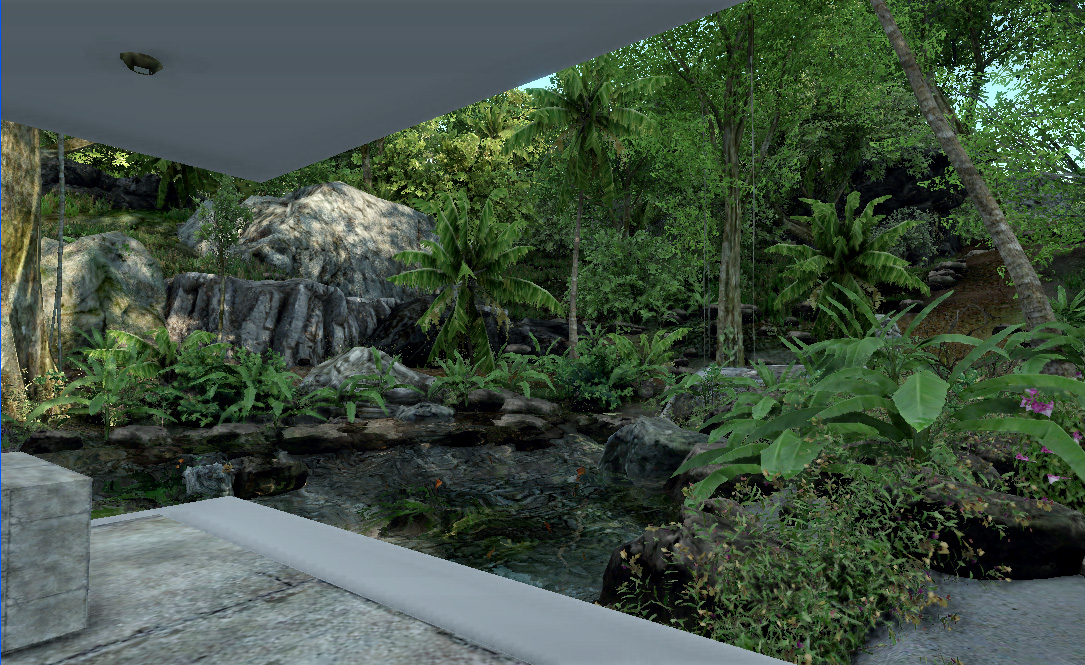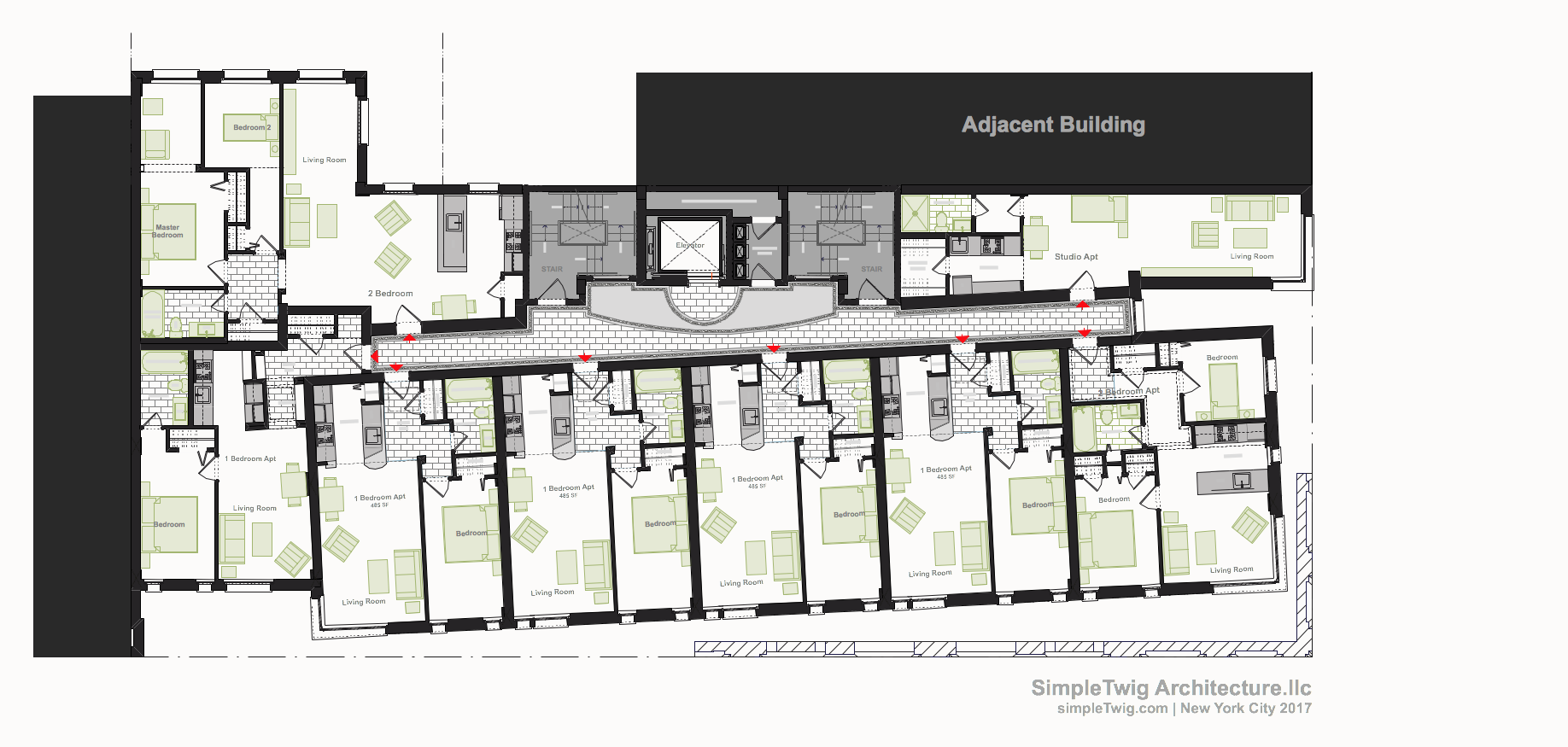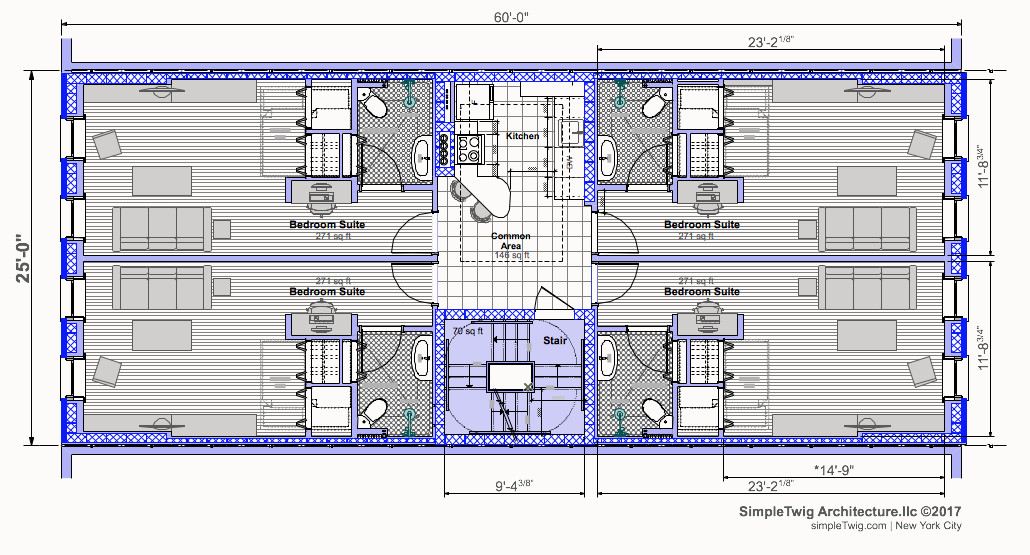Using New York City as an example, we can examine the typical urban residential block. Part of a long and narrow grid it provides the basics for laying out residential and commercial districts and buildings. The American grid, with its ascending street numbers or letters, is an organizing approach meant to equalize, to account for expansion and to make navigation easy and efficient.
First we’ll look at a very early Sandborn Map surveyed as housing and other structures were filling in the blocks, analysis this in terms of road to lot ratio, housing disposition and it’s inherent pros/cons, and then explore a few property surveys to see some variations to the individual residential type in NYC.
Continue reading “Existing Urban Block and its Inherent Shortcomings”


